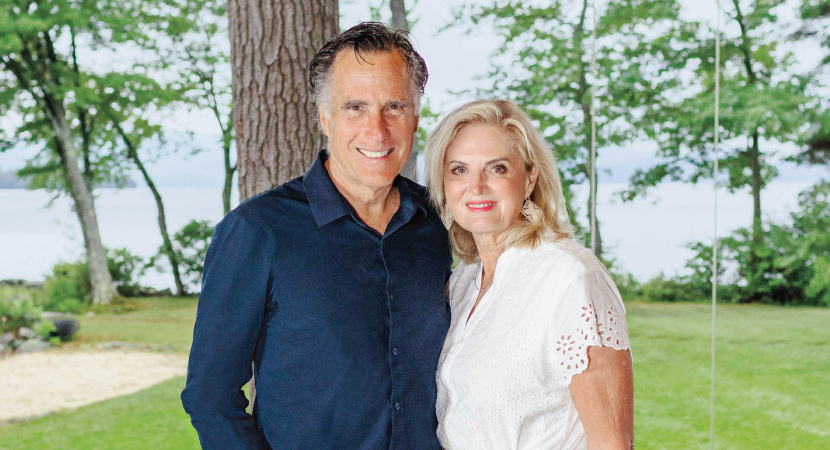
Romneys’ $5 million gift enables groundbreaking neurologic research
“This is an opportunity for people to invest in researchers who think outside the box and want to try new things. When you look at Dr. Selkoe and Dr. Weiner and what’s in their wake—it’s goodness, it’s innovation, it’s hope—and we want to get behind that.” —ANN ROMNEY
Ever since the Ann Romney Center for Neurologic Diseases was named at the Brigham in 2014, Ann Romney has drawn awareness and funding for the work of more than 300 scientists seeking treatments and cures. Through media, events, and speaking engagements across the U.S., she has shared the center’s progress, as well as the ways Brigham neurologist Howard L. Weiner, MD, changed her life after her own multiple sclerosis (MS) diagnosis.
In fact, the idea for the center started through discussions between Weiner and Mrs. Romney on how to accelerate research to help millions of people affected by five neurologic diseases: MS, Alzheimer’s disease, Parkinson’s disease, ALS (Lou Gehrig’s disease), and brain tumors.
“It’s been thrilling to see many scientists coming together with an integrated approach to these conditions—guided by brilliant leaders,” she says.
Now, Mrs. Romney and her husband, U.S. Senator Mitt Romney, made a new $5 million commitment to enable Weiner and co-director Dennis J. Selkoe, MD, to push the research further.
Their gift is supporting many projects, such as investigations into new treatments for Parkinson’s disease and clinical trials for a nasal vaccine for Alzheimer’s disease and a nasal vaccine for Progressive MS.
“The Romneys have elevated our research to a new and higher level,” Weiner says. “Their support furthers our understanding of the basic processes driving neurologic diseases and our testing of new therapies.”
Adds Selkoe, “The Romneys’ support is tremendous and allows us to continue to perform experiments in areas we otherwise couldn’t undertake because these approaches are novel and somewhat unconventional.”
As the Romneys reflect on the work, they admire Selkoe and Weiner’s unwavering determination to forge new paths in medicine.
“This is an opportunity for people to invest in researchers who think outside the box and want to try new things,” Mrs. Romney says. “When you look at Dr. Selkoe and Dr. Weiner and what’s in their wake—it’s goodness, it’s innovation, it’s hope—and we want to get behind that. Their work is a promise for the future.”